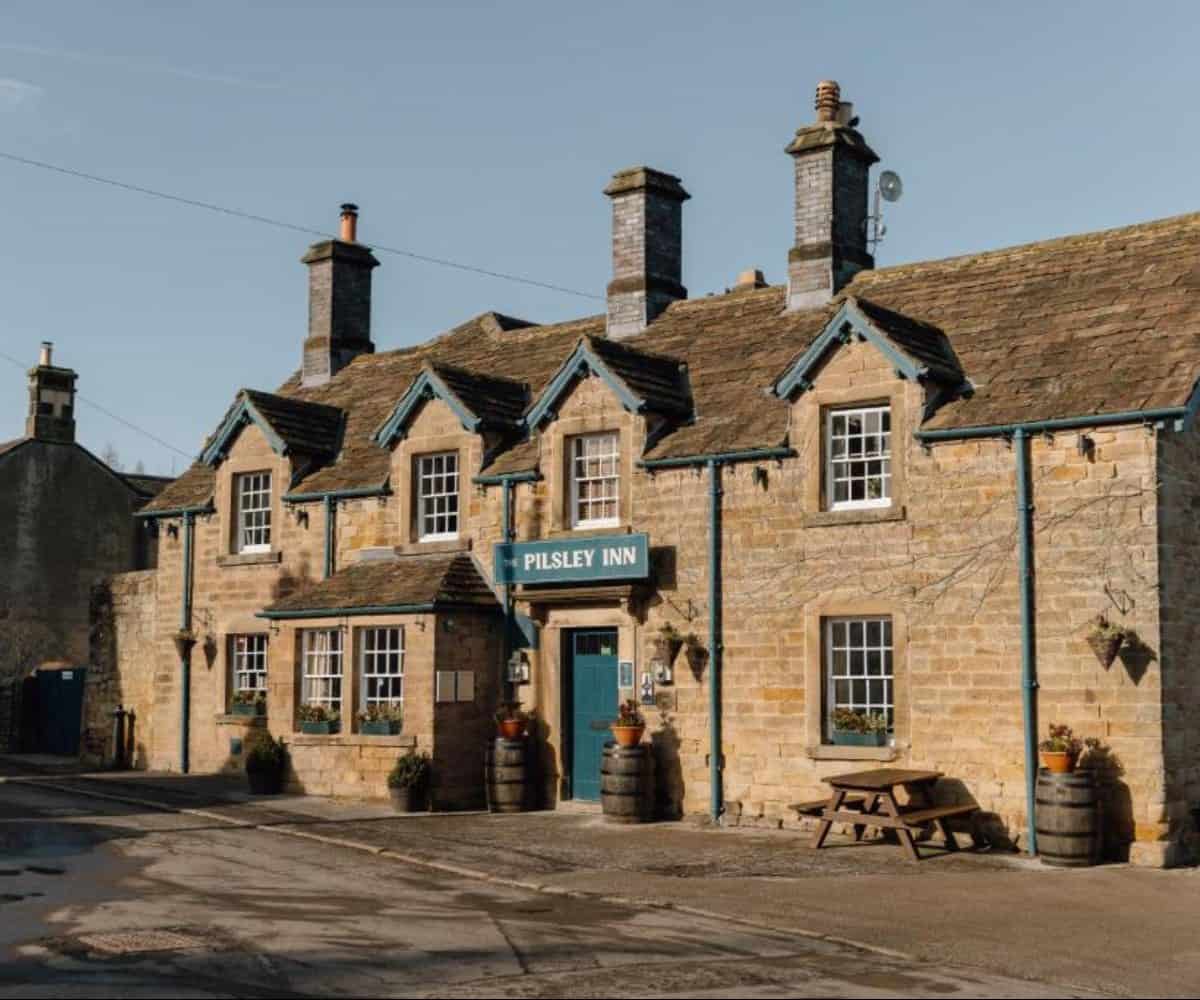The name Sherwood Forest conjures an immediate and powerful image: a vast, sun-dappled woodland stretching to the horizon, a sanctuary for a green-clad hero and his band of outlaws, a place where the arrows of justice fly true against tyranny.
This is the forest of the imagination, a landscape built from centuries of ballads, books, and blockbuster films.
To arrive at the real Sherwood Forest today is to encounter a different, though no less compelling, reality. Here, a modern visitor centre, managed by the Royal Society for the Protection of Birds (RSPB), welcomes guests with a café, a gift shop, and clearly marked trails.
The untamed wilderness of legend has been replaced by a carefully managed National Nature Reserve.

To truly understand this iconic place, one must journey beyond the myth and explore the multiple layers that lie beneath.
Sherwood is not one forest, but many, each superimposed upon the last. It is a geological landscape shaped by ancient rock and ice.
It is a political territory forged by Norman kings and the iron fist of Forest Law. It is a cultural heartland, home to the enduring legend of Robin Hood, whose romantic ideal stands in stark contrast to the brutal reality of medieval outlawry.
It is a living ecosystem, embodied by the thousand-year-old Major Oak, a natural monument now at the center of a cutting-edge scientific battle for survival.
And it is, finally, a beloved destination for the modern explorer. This is a guide through those layers—a journey into the deep, complex, and fascinating story of the real Sherwood Forest.
I hope you enjoy the journey through Sherwood Forest as our family has done. The history and folklore, the culture and beauty are entwined in the forest.

The King’s Domain – A Landscape Forged by Law and Power
The story of Sherwood Forest begins long before any king or outlaw walked its paths.
Its identity as a wooded sanctuary is rooted in the very earth itself, a history that set the stage for its later role in English history and folklore.

The Deep Past: From Ice Age to Shire Wood
The landscape we see today has its origins at the end of the last Ice Age, approximately 10,000 years ago.
Pollen core samples attest to a continuous woodland presence since that time, a place inhabited by prehistoric hunter-gatherers who left behind flint tools as evidence of their passage.
Later, during the Roman and Anglo-Saxon periods, human settlement and farming became more common, with Roman villas identified near Mansfield Woodhouse and the body of King Edwin of Northumbria reputedly hidden in the church at Edwinstowe in 633 AD.

A key factor in Sherwood’s preservation as a wooded area is its unique geology. The forest sits atop a bed of Permo-Triassic sandstone, once known as Bunter Pebble-beds.
This porous rock creates soil that is drier and less fertile than the surrounding clay and limestone lands.
This relative lack of agricultural potential discouraged the widespread clearing for arable farming that transformed other parts of England.
The Domesday Book of 1086 confirms that this region had significantly less cultivated land than the fertile Trent valley nearby.
Long before it was a royal playground, Sherwood was a landscape defined by its geological constraints. Its name was first recorded in 958 AD as Sciryuda, an Anglo-Saxon term meaning “the woodland belonging to the shire,” establishing its identity as a distinct administrative area centuries before the Norman Conquest.1
The Norman Conquest and the Imposition of Forest Law
The Norman invasion of 1066 marked the single most important turning point in Sherwood’s history.
William the Conqueror designated the area a Royal Hunting Forest, a status mentioned in the Domesday Book.
This act transformed Sherwood from a simple shire wood into a tightly controlled domain of the crown. To understand medieval Sherwood, it is crucial to grasp that the term “Forest” was not a description of geography but a statement of legal status.
It defined an area of land—which included not just woods but also heaths, grasslands, villages, and towns—that was subject to a special and severe set of royal laws designed to protect the king’s hunting rights.

The primary purpose of this “Forest Law” was the preservation of two resources for the king’s exclusive pleasure: the “vert” (the trees and undergrowth that provided cover for game) and the “venison” (the beasts of the chase, primarily deer).
It was illegal for anyone else to hunt deer or to chop down trees within the forest’s boundaries without royal permission.
This law was brutally enforced by a hierarchy of crown-appointed officials, including foresters, verderers, and rangers, who patrolled the woods.
The punishments for transgressions were draconian. Forest Assizes from the reigns of Henry II and Richard I prescribed blinding and castration for anyone caught taking the king’s deer or boar, a practice that dated back to the time of Henry I.
For the hundreds of ordinary people who lived and worked within its bounds, Forest Law represented an additional and often oppressive layer of administration that governed their lives and livelihoods.
The Royal Heart: Power and Politics in the Greenwood
The popular image of Sherwood as an untamed wilderness, a refuge for rebels and the dispossessed, is fundamentally misleading.
The historical record and archaeological evidence paint a picture of a landscape that was, in fact, a carefully managed center of royal power and administration.
Far from being a remote backwater, Sherwood was popular with numerous Norman and Plantagenet kings, particularly King John and Edward I.
At the heart of this royal domain was a major palace complex at Clipstone, known in medieval times as the “King’s Houses”.
This was no mere hunting lodge. Visited by all eight kings from Henry II to Richard II, it was a site where parliaments were held and foreign dignitaries entertained.
Recent archaeological excavations have revealed that what was once thought to be a small, modest site had, by the late 13th century, expanded to cover more than seven acres.
The complex included extensive residential quarters, chapels with high-status architectural features, stables, and a vast, 1,457-acre deer park.
It even featured a large, artificially flooded lake and 70 acres of rabbit warrens, all part of a meticulously designed landscape created to provide an idealized hunting experience for the king and his court.
The existence of such a significant royal center demonstrates that medieval Sherwood was not a wild frontier but a curated and politically important landscape.
Its management was a serious affair, with the Keepership of the Forest being a hereditary position held by powerful families.
Further shaping the landscape were the great monastic orders. On land granted to them by the Crown, abbeys such as Rufford, Newstead, and Thurgarton were founded in the 12th and 13th centuries, establishing large estates that brought further management and cultivation to the forest.
The Great Shrinking: From a Fifth of a County to a Precious Remnant
The physical boundaries of Sherwood Forest serve as a tangible barometer of England’s great social and economic transformations.
At its zenith in the 13th century—the era popularly associated with Robin Hood—the Royal Forest was a vast territory. It covered approximately 100,000 acres, stretching 20 miles from north to south and 8 miles wide, encompassing roughly one-fifth of the entire county of Nottinghamshire.
The Great North Way, the main road from London to York, ran directly through its heart, making it a notorious haunt for the robbers and outlaws who preyed on travelers.7
The long, slow process of its decline began with one of the most pivotal events in English history.
In 1536, Henry VIII’s Dissolution of the Monasteries saw the huge monastic estates within Sherwood seized by the Crown and subsequently sold or granted into private ownership.
This marked the beginning of a major shift from royal and church control to private landholding, initiating a wave of land clearance for agriculture and the creation of country house estates.

This trend accelerated dramatically in the 17th and 18th centuries. Stuart monarchs, including Charles II and Queen Anne, sold off large tracts of former Crown land to private aristocrats.
This gave rise to the great ducal estates of Thoresby Hall, Welbeck Abbey, and Clumber House, a collection of properties so grand they became known collectively as the “Dukeries”.
These powerful landowners managed the forest not for royal sport but for commercial profit, harvesting its valuable oak and birch timber for shipbuilding, construction, and fuel.
The final and most dramatic changes were wrought by the Industrial Revolution. In the 19th and 20th centuries, the discovery of rich coal seams beneath the forest floor led to the sinking of collieries, such as the one at Thoresby in the 1920s.
The construction of mines, new villages to house the workers, and the railways needed to transport the coal irrevocably fragmented the ancient landscape.
Today, the area officially protected as the Sherwood Forest National Nature Reserve covers just over 1,000 acres.
This precious remnant, a Site of Special Scientific Interest (SSSI), represents a mere 1% of the forest’s medieval expanse, a stark illustration of the profound historical forces that have reshaped this legendary landscape.
In the Footsteps of Outlaws – Deconstructing the Robin Hood Legend
No name is more synonymous with Sherwood Forest than Robin Hood. For more than 600 years, the legend of the noble outlaw has been inextricably woven into the identity of the woods.
Yet, the story of Robin Hood is a complex tapestry of folklore, literature, and social history, one that has evolved dramatically over time and stands in sharp contrast to the historical reality of life outside the law in medieval England.
The Birth of a Legend: “Robyn hod in scherewod stod”
The first whispers of the legend appear in the late 14th century. In 1377, William Langland’s great poem, The Vision of Piers the Plowman, makes a passing reference to the “rymes of Robyn hood,” suggesting they were already well-known in popular culture.
The first explicit written connection between the outlaw and the forest comes from a poem dating to around 1400, which contains the evocative line: “Robyn hod in scherewod stod” (“Robin Hood in Sherwood stood”).
The foundations of the legend as we know it were laid down in a series of medieval ballads. One of the earliest and most important is ‘A Lyttell Gest of Robyn Hode’, believed to have been written in the mid-15th century.
This lengthy poem introduces the core elements of the story: Robin’s band of loyal followers, including Little John and Will Scarlet; his sworn enemy, the corrupt Sheriff of Nottingham; and his base of operations in the greenwood.
In these early accounts, Robin is not a dispossessed nobleman but a member of the yeoman class—a sturdy, independent commoner.
His defining characteristics are an outstanding skill with the longbow, a fierce opposition to corrupt authority (particularly clergymen and the Sheriff), and a pious devotion to the Virgin Mary.
The king in these tales is named ‘Edward’, not the later, more familiar Richard the Lionheart.
The Evolving Hero: How the Myth Grew
The Robin Hood story has never been static; it is a living myth that has been reshaped by each generation that has retold it.
Over the centuries, new characters and themes were added, transforming the yeoman hero into the aristocratic champion of justice we know today.
The association with the late 12th-century King Richard the Lionheart and his villainous brother John, which places Robin’s outlawry during the Third Crusade, did not become a central part of the narrative until the 16th century.

Some of the most beloved characters appear to be later additions. Maid Marian and the jovial Friar Tuck are absent from the earliest ballads and likely entered the legend through the hugely popular ‘Robin Hood games’—theatrical plays that were a staple of May Day festivities in the 15th and 16th centuries.
Perhaps the most significant evolution of all was the introduction of the legend’s defining moral ethos. The famous principle of “robbing from the rich to give to the poor,” while hinted at in the early ballads’ sympathy for the common man, was not explicitly stated until 1592, in John Stow’s Annales of England.
This single phrase cemented Robin Hood’s status as a champion of social justice, a role that has ensured his enduring global appeal.
The legend’s adaptability is its greatest strength; it has served as a mirror reflecting the social and political concerns of every era, from the grievances of medieval peasants chafing under Forest Law to modern debates about taxation and wealth inequality.
The Historical Search: Man or Myth?
For centuries, historians and folklorists have debated whether a real Robin Hood ever existed.
The truth is, there is no definitive historical proof. While no archaeological artifacts directly linked to him have ever been found, numerous historical figures with similar names have been proposed as possible candidates, some dating back to the late 13th century.
Some scholars suggest that “Robin Hood” may have been a stock alias, a common nickname used by or in reference to bandits and fugitives.

While Sherwood Forest remains the heartland of the legend, other locations in the north of England also lay claim to him.
The earliest accounts state he was born in Loxley, South Yorkshire, and a coastal refuge at Robin Hood’s Bay in Yorkshire is also part of the tradition.
His death is said to have occurred at Kirklees Priory near Huddersfield, where he was allegedly bled to death by his treacherous aunt, the Prioress.
Despite the lack of concrete evidence, the power of the legend is undeniable, drawing thousands of visitors to Sherwood each year in search of its most famous, if possibly fictitious, resident.
The Reality of the Outlaw: A World Away from Lincoln Green
To fully appreciate the Robin Hood legend, one must understand how radically it departs from the grim reality of outlawry in medieval England.
The term “outlaw” was not a romantic title but a terrifying legal status. An outlaw was a person who, by failing to appear in court to answer a criminal charge, was formally placed outside the protection of the law.
Stripped of all rights and property, an outlaw could be killed by anyone with impunity; they were said to “bear a wolf’s head”.
This sentence often led to a life of desperate wandering and violent crime out of sheer necessity.
The great forests of England, being almost impossible to police, offered a natural refuge for these fugitives.
Sherwood, with the Great North Way running through it, was a prime location for robbery.
However, these real-life outlaws were a world away from the noble hero of folklore. They were not champions of the poor; they were more likely to exploit the peasantry to survive.

Historical records reveal the existence of large, organized gangs of outlaws, often led not by yeomen but by members of the aristocracy.
Younger sons of noble families, with military training but no inheritance, frequently turned to crime when there was no war to provide them with plunder or ransom.
The Folville and Coterel gangs, for example, were notorious in the 14th century for operating as violent criminals-for-hire. They engaged in robbery, kidnapping for ransom, rape, and murder, often with the tacit protection of powerful patrons.
This was the true face of the medieval outlaw: brutal, self-serving, and a far cry from the gallant hero in Lincoln green.

The Heart of the Forest – A Pilgrimage to the Major Oak
At the very center of Sherwood’s story—both ancient and modern—stands a single, magnificent tree: the Major Oak.
More than just a natural wonder, this ancient English oak is a living monument, a silent witness to a millennium of history, and the focal point of the forest’s enduring legends.
Today, it is also the subject of a compelling and urgent scientific mission to ensure its survival for generations to come.

The Living Monument: Introducing the Major Oak
To stand before the Major Oak is to be humbled by its sheer scale and antiquity.
Estimated to be between 800 and 1,200 years old, this colossal tree weighs an estimated 23 tons.
Its gnarled trunk has a circumference of 11 metres (33 feet), and its mighty branches spread to create a canopy 28 metres (92 feet) across. It is, without question, one of the largest and most famous oak trees in Britain.
Its name, contrary to popular belief, does not derive from its size. It was named in honor of Major Hayman Rooke, a local antiquarian who described and sketched the tree in his 1790 book on the remarkable oaks of the area.

Before Rooke’s time, it was known by the less romantic name of the “Cockpen Tree,” a likely reference to the cockfighting that once took place beneath its branches.
Its most famous association, of course, is with Robin Hood. Folklore, largely popularized in the Victorian era, holds that the tree’s hollow trunk served as a hiding place for the outlaw and his Merry Men as they evaded the Sheriff of Nottingham.
While this makes for a wonderful story, it is almost certainly a myth. Given the tree’s estimated age, it would have been little more than a sapling during the 12th and 13th centuries when Robin Hood is said to have lived.
Regardless of historical accuracy, the legend has made the tree an international icon and a destination for pilgrims from around the world.
A Tree in Peril: The Modern Struggle for Survival
For all its ancient resilience, the Major Oak is now facing the most significant threats of its long life. Its health is visibly declining, a fragile state resulting from a combination of historical interventions, the pressures of its own popularity, and the unprecedented challenges of climate change.

For over a century, various efforts have been made to preserve the tree. Since 1908, its sprawling limbs have been propped up by an elaborate system of chains and, more recently, slender steel poles.
Unfortunately, some historic interventions, such as filling cavities with concrete and using lead sheets, have caused more harm than good, trapping moisture and promoting decay.
The most pressing issue, however, lies in the ground beneath it. Decades of foot traffic from millions of visitors, before a protective fence was installed in the 1970s, has severely compacted the sandy soil around its base.
This compaction restricts the flow of water, oxygen, and nutrients to the tree’s root system, effectively starving it.
A recent root radar survey revealed an alarmingly reduced network of roots in poor condition, lacking the vital interaction with fungi and other microorganisms essential for a healthy tree.

Compounding this problem is the growing impact of climate change. The tree has endured consecutive summers of prolonged drought and unprecedented high temperatures, placing it under immense stress.
In recent years, its crown has produced noticeably fewer leaves, a clear visual indicator of its struggle for survival.
The history of the Major Oak’s care serves as a powerful illustration of humanity’s evolving understanding of conservation—from crude physical props and romantic folklore to a modern, holistic, and science-driven approach to preserving our natural heritage in a rapidly changing world.
The Fight for the Future: Science to the Rescue
In response to these grave threats, the RSPB and its partners have launched an ambitious five-year conservation program to restore vitality to the Major Oak.
This initiative has transformed the ancient tree into a living laboratory, where cutting-edge science and innovative techniques are being deployed to prolong its life.
The core of the project focuses on healing the damaged soil. In a painstaking, multi-year process, staff and volunteers are manually excavating wedge-shaped trenches around the tree.
This process aerates the concrete-like soil and allows for the introduction of nutrient-rich organic matter, gathered from the forest floor, which is mixed in to reinvigorate microbial activity and encourage the compromised roots to grow.

This physical intervention is supported by a suite of advanced monitoring technologies. Subterranean sensors provide real-time data on soil temperature and moisture content, allowing the team to understand the conditions at root level.
Tiny devices called dendrometers have been attached to the trunk to measure microscopic changes in its girth, tracking its growth and shrinkage in response to water uptake with incredible precision.
In a fascinating development, researchers from the University of Cambridge are sequencing the tree’s DNA. This genetic analysis aims to unlock the secrets of its longevity and resilience and may finally answer a long-standing question: whether the Major Oak is a single tree or the fusion of several saplings that grew together centuries ago.
This intensive, science-led effort is not just about saving one tree; it is a pioneering project that is advancing our understanding of how to care for ancient trees across the globe in the face of modern environmental pressures.
Your Sherwood Adventure – A Practical Guide for the Modern Explorer
A visit to Sherwood Forest is an opportunity to step into a landscape alive with history, nature, and legend. The Sherwood Forest National Nature Reserve, managed by the RSPB, is the heart of this experience, offering a wealth of activities for all ages and interests.
We had a wonderful time at Sherwood Forest together, our daughter brought her boyfriend, Connal along with us on this occasion.
It took a while for us to decide on gifts from the visitor centre gift shop because the choices are so wide ranging and the quality is fabulous.
The visitor centre café was a lovely welcome spot for refreshments on the hot day that we visited.

Planning Your Visit to Sherwood Forest National Nature Reserve
To make the most of a trip, it is helpful to have the key logistical information at hand.
Getting There & Parking: The main car park is located on Swinecote Road, Edwinstowe (postcode: NG21 9QB). An accessible car park for visitors with mobility issues is situated next to the Visitor Centre on Forest Corner (postcode: NG21 9RN).
The reserve can accommodate up to 700 vehicles in total. Parking fees apply, though entry to the reserve itself is free. Coach parking must be paid for at the Visitor Centre shop.
Visitor Centre: The modern Visitor Centre is the starting point for any adventure. It houses a shop selling nature-themed gifts, RSPB products, and Robin Hood souvenirs, as well as a café offering snacks, drinks, and meals.
Toilets and an information point are also located here.
Accessibility: The site is designed to be accessible. The visitor centre has a lift and ramp access. There are two accessible toilets and a larger Changing Places facility for those requiring carer assistance.
A mobility scooter is available for hire but must be booked in advance.
Rules of the Reserve: To protect this special habitat, visitors are asked to follow a few key rules.
Dogs are welcome but must be kept under control, especially during bird breeding season (1 March to 31 August).
Fires, barbecues, and foraging (including picking fungi) are strictly prohibited. Cyclists and horse-riders must remain on the designated public bridleways.4
Exploring the Trails
The best way to experience the forest is on foot. A series of waymarked trails start from the Visitor Centre, each offering a different perspective on the landscape.
| Trail Name | Distance (miles) | Approx. Time | Difficulty | Key Sights & Experience |
| The Major Oak Trail | 1.5 | 45 mins | Easy | The essential pilgrimage to the iconic Major Oak. The route passes other veteran oaks and is surfaced for accessibility. |
| Greenwood Trail | 2.0 | 1 hr 15 mins | Easy | A sensory walk designed to showcase the forest’s seasonal changes, birdlife (listen for cuckoos and woodpeckers), and vibrant colours. |
| Wildwood Trail | 4.0 | 2 hr 30 mins | Moderate | For the more adventurous, this longer trail explores the diverse habitats managed by the RSPB, including heathland and wood pasture, offering a deeper sense of the medieval landscape. |

Activities and Events
Beyond the walking trails, Sherwood offers a range of activities and a vibrant calendar of events.
For Families: The Robin Hood-themed play area, complete with a lookout post and rope bridge, is a major draw for younger visitors. Den-building zones and activity backpacks available for hire provide more opportunities for hands-on fun in nature.3
Guided Walks & Archery: Throughout the year, especially during school holidays, the reserve hosts expert-led guided walks on topics ranging from history and heritage to nocturnal wildlife like bats. Sessions to try your hand at archery, the legendary outlaw’s signature skill, are also regularly available.15
The Robin Hood Festival: This is the flagship event of the year, a multi-weekend celebration that brings the medieval world to life.
When: The festival typically runs over several weekends in late July and August.
What to Expect: The forest buzzes with a medieval atmosphere, featuring spectacular jousting tournaments by groups like The Knights of Nottingham, thrilling hand-to-hand combat displays, mesmerizing falconry shows, and roaming storytellers, musicians, and costumed characters.
Special Features: The festival often includes themed weekends, such as “Films in the Forest” with outdoor cinema screenings and a “Fantasy in the Greenwood” weekend celebrating folklore with orcs and witchers.
Logistics: While entry to the festival is free, special event parking charges apply to all vehicles.
Beyond the Ancient Oaks – Exploring the Wider Sherwood Landscape
While the National Nature Reserve is the historic and spiritual heart of Sherwood, the name now applies to a much broader landscape of parks, forests, and attractions.
To fully appreciate the region, it is worth exploring these other sites, each of which offers a distinct experience. A visitor’s choice depends entirely on whether they seek history, adrenaline, or tranquility.
| Destination | Best For | Key Activities | Vibe & Atmosphere | Managed By |
| Sherwood Forest NNR | History, Robin Hood legend, ancient oaks, gentle walks | Visiting the Major Oak, guided history tours, Robin Hood Festival, bird watching | Historic, natural, educational, family-friendly | RSPB |
| Sherwood Pines | Action & adventure, family cycling, adrenaline | Mountain biking trails (all levels), Go Ape treetop challenge, camping, concerts, play areas | Active, modern, recreational, bustling | Forestry England |
| The Dukeries (Clumber Park & Rufford Abbey) | Stately homes, landscape gardens, peaceful walks & cycling | Exploring abbey ruins, lakeside walks, walled gardens, cycling on grand avenues | Grand, aristocratic, picturesque, tranquil | National Trust / Local Council |
| Creswell Crags | Deep history, archaeology, natural wonders | Cave tours with Ice Age rock art, museum, gorge walk | Prehistoric, geological, dramatic, scientific | Independent Trust |
Sherwood Pines: Managed by Forestry England, Sherwood Pines is the region’s hub for action and adventure. It boasts over 3,000 acres of woodland with an extensive network of cycling trails, from gentle family routes to challenging mountain bike courses.
It is also home to a Go Ape treetop adventure course, Segway tours, camping facilities, and a large outdoor arena that hosts concerts and events. It offers a modern, recreational forest experience focused on high-energy activities.
The Dukeries: For a more tranquil and picturesque day out, the great parklands of the Dukeries are ideal. Clumber Park, managed by the National Trust, offers over 3,800 acres of beautiful parkland, heath, and woods, perfect for peaceful walks and cycling around its magnificent lake.
Nearby, Rufford Abbey Country Park is set around the romantic ruins of a 12th-century Cistercian monastery, offering gardens, a boating lake, and family play areas.
These parks evoke the aristocratic heritage of the 18th and 19th centuries.
Further Afield: The region’s history extends far beyond the medieval period. A short drive away is Creswell Crags, a spectacular limestone gorge honeycombed with caves that contain Britain’s only known examples of Ice Age rock art.
For those interested in more recent history, the historic market town of Newark boasts a dramatic castle ruin, a fine Georgian market square, and the National Civil War Centre.
The picturesque cathedral town of Southwell, described as the “jewel in Nottinghamshire’s crown,” is also well worth a visit.
Conclusion: The Enduring Magic of a Layered Landscape
Sherwood Forest endures in the global imagination as a simple place of heroes and villains, of ancient trees and defiant outlaws.
Yet, to walk its paths today is to discover a landscape of profound complexity, where layers of geology, law, myth, and science coexist and intertwine. It is at once a royal hunting ground built on absolute power and a rebel’s sanctuary that symbolizes the fight for justice.
It is a fragile ecosystem, embodied by a single, struggling tree, and a modern playground for families and adventurers.
The true magic of Sherwood lies in this very layering. The oppressive reality of Forest Law gives the fantasy of Robin Hood its enduring power.
The ancient resilience of the Major Oak makes the modern scientific effort to preserve it all the more poignant. A visit here is more than a simple walk in the woods; it is a journey through time. It is an opportunity to stand in a place where the tangible history of kings and the intangible power of legend are rooted in the same soil.
By looking beyond the souvenir bows and green felt hats, the modern visitor can connect with this deeper story, appreciating the complex forces that have shaped this land and understanding their own visit as a small, but meaningful, part of its ongoing, thousand-year narrative.

Sherwood Forest will always be home of Robin Hood and his Merry Men, Maid Marian will always be his Lady and Nottinghamshire, the land of legends will have a hero.
Thank you for taking a journey with me and my family through Sherwood Forest to discover all the layers that lie beneath and a conservation program to support this magnificent and magical place.
We’ve been to visit the forest and the Major Oak tree so many times before with all four of our kids at different ages, who tried their hand at archery at one of the Robin Hood Festival events.
We have explored the trails with lots of our dogs and in all seasons and the memories that are created will always stay with me and be cherished. I hope you can visit too and create magical memories too.


















 English (US) ·
English (US) ·